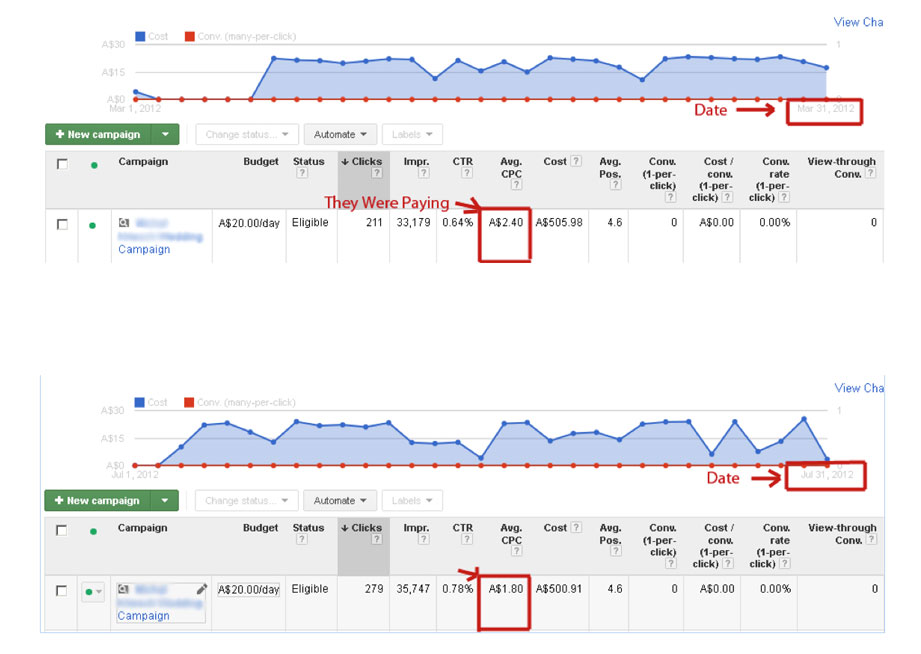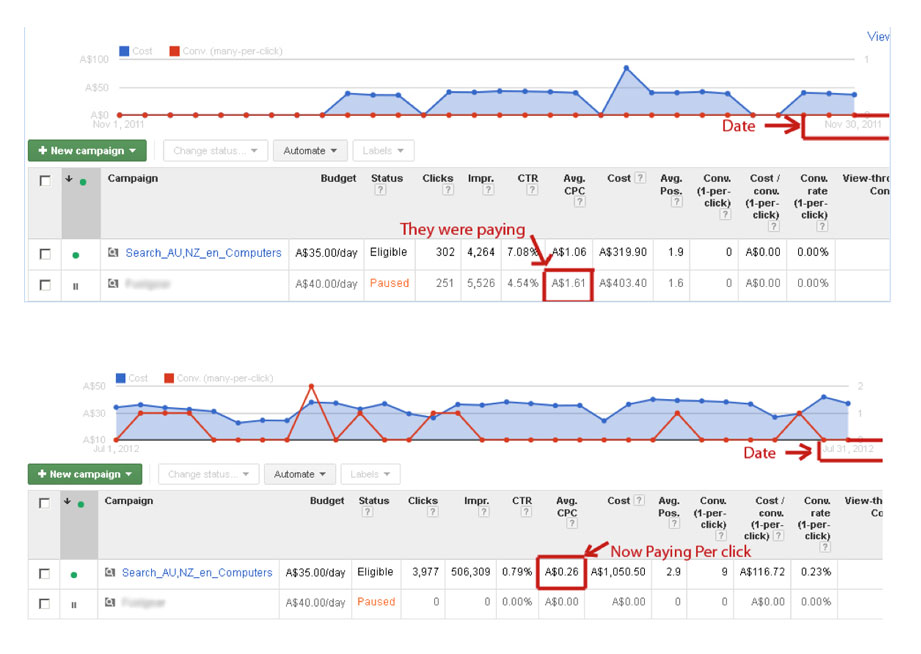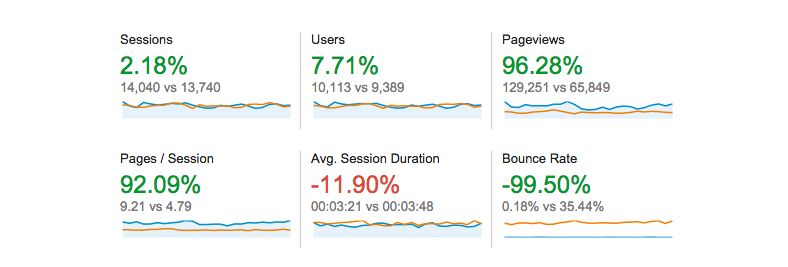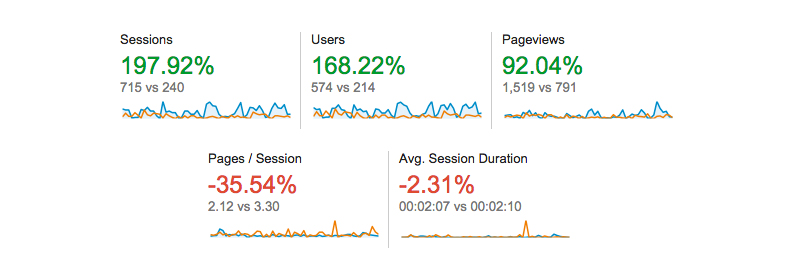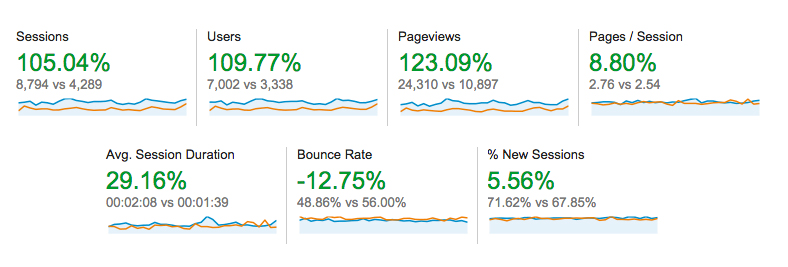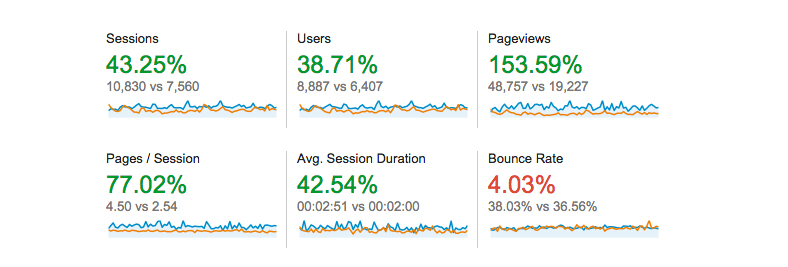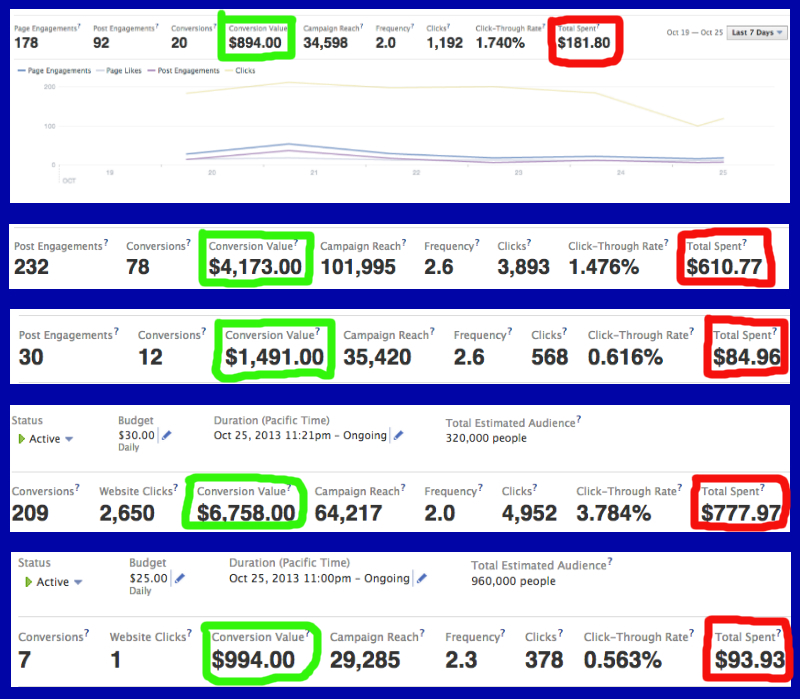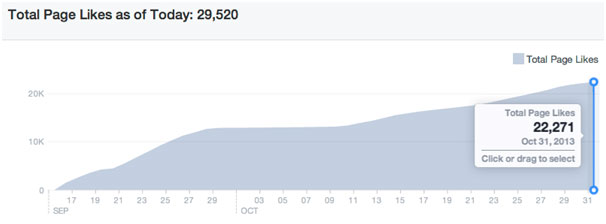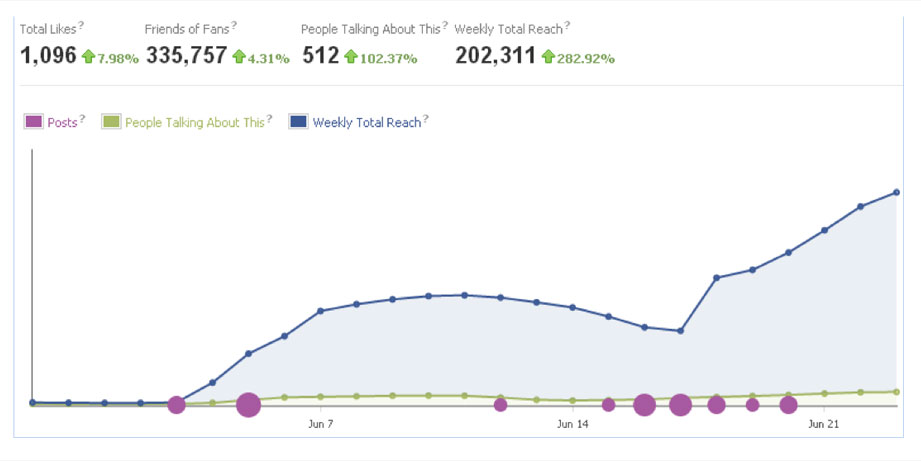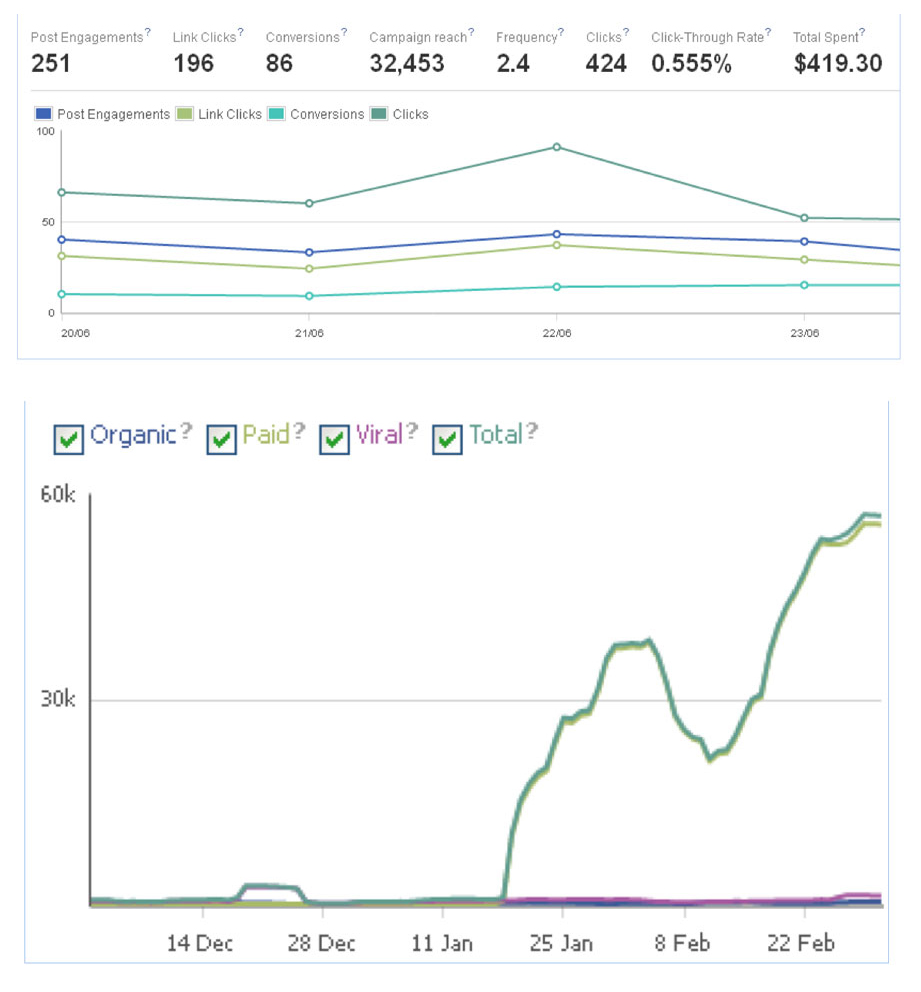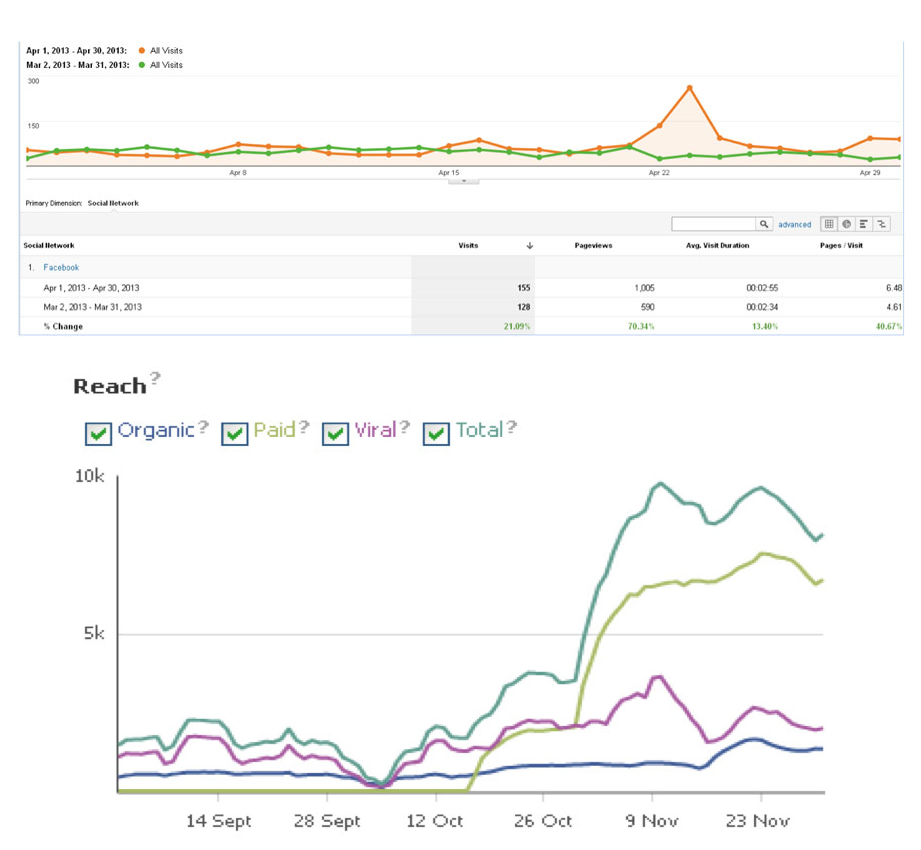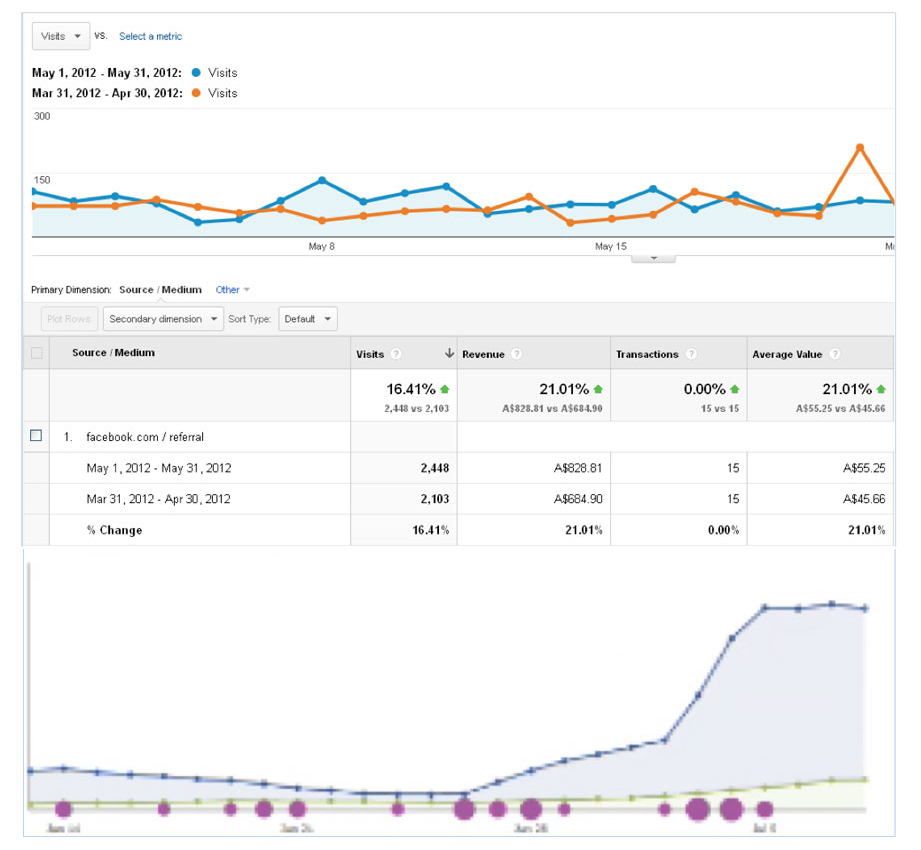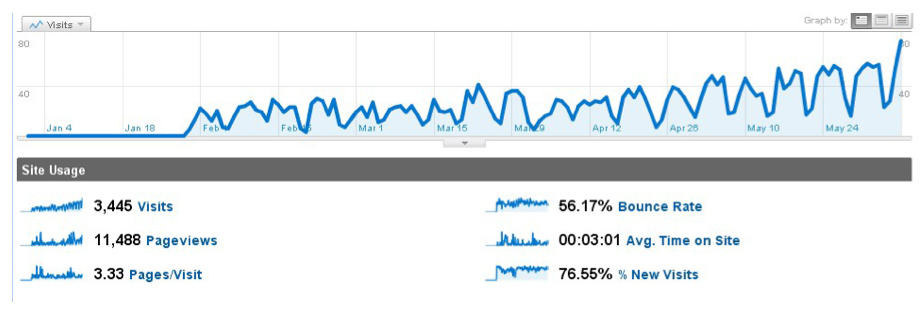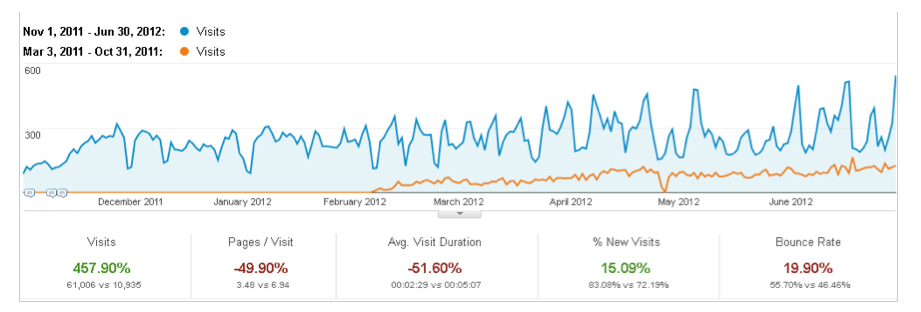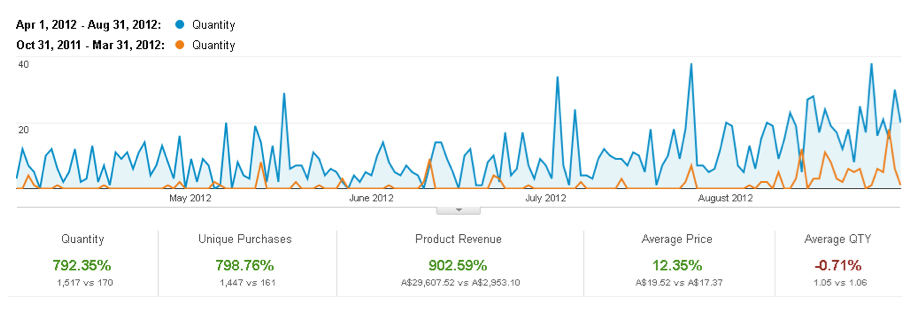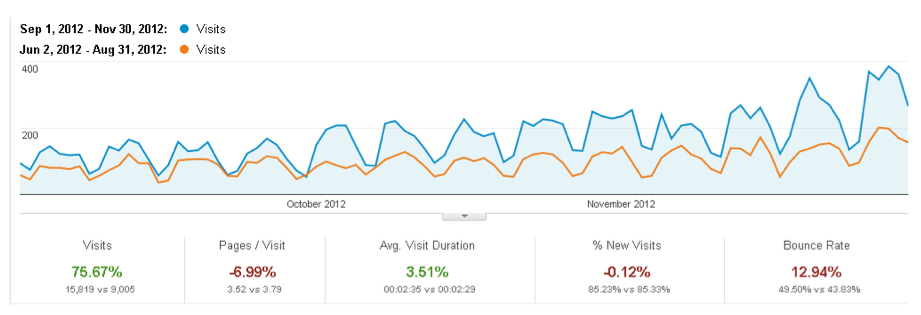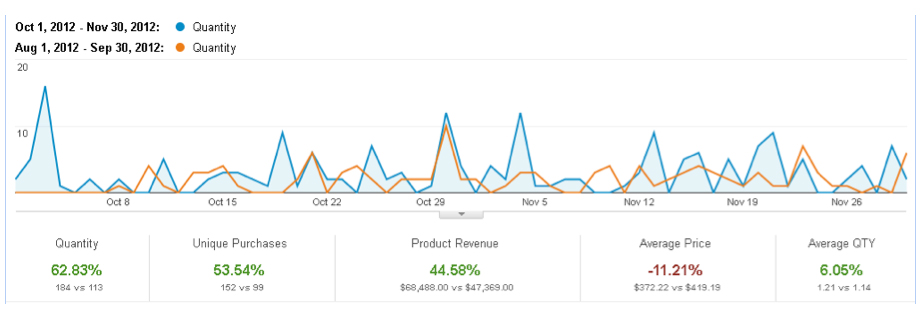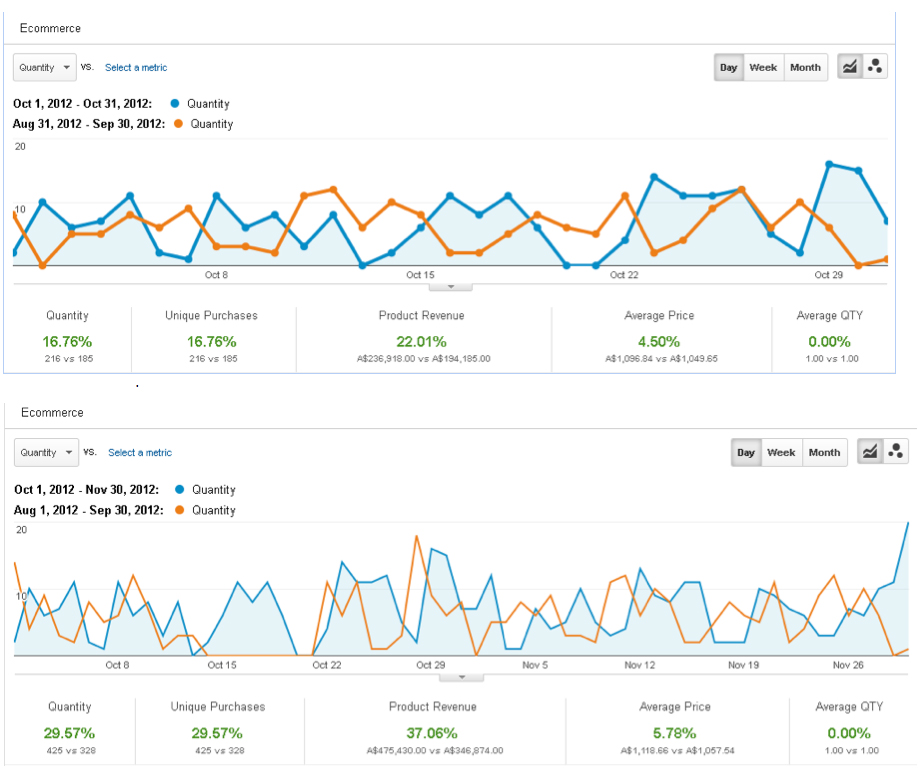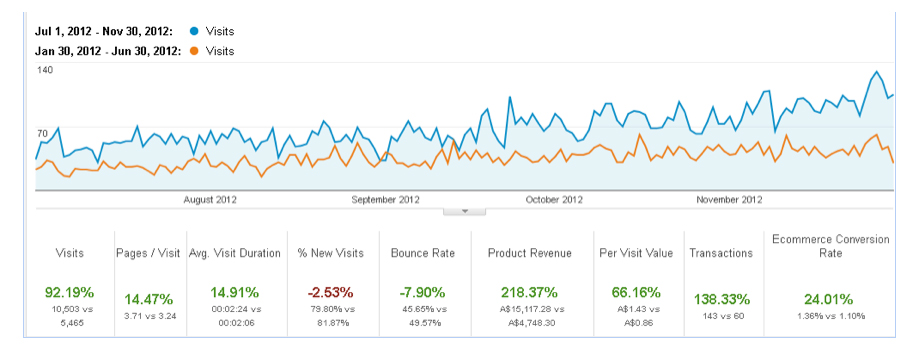Tracking and maximizing your return on investment
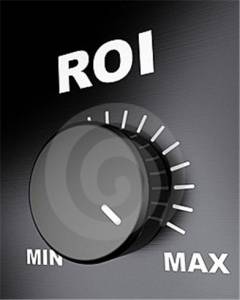 Good day! This is Samuel from Think Big Online and today I want to speak with you about maximizing your return on investment. Now before we can maximize our return on investment, we need to be able to track where our investment is going and the return that it is providing and so I’m going to run you through a few great tools that we use to track where our investment is going and the return that we are getting back.
Good day! This is Samuel from Think Big Online and today I want to speak with you about maximizing your return on investment. Now before we can maximize our return on investment, we need to be able to track where our investment is going and the return that it is providing and so I’m going to run you through a few great tools that we use to track where our investment is going and the return that we are getting back.
So if you’ve been to our website, you’ll notice that we have a 1300 number up there and this is for a couple of reasons. First it makes us look like a bigger national company than just having a state specific number. We’re in Sydney so if we have a 02 number then we would know our market to a degree because people from Melbourne or Brisbane or wherever might not want to engage with us because they see us as being only in Sydney when actually we service the whole country.
Now the more important reason is that with the 1300 number, we can track every single phone call that comes in and record it.
The phone company that we use is FYI Telco, very good service and we are not affiliated with them in any way so we are not getting any sort of referrals for mentioning them but they have really good service and it’s really cheap. To get started with the 1300 number is about $5 a month then it goes upwards depending on which plan that you want to be on. So check them out if you want to get a 1300 number or a 1800 number and the benefit is we can track every phone call that comes in.
You can see the phone number, the length of the call and how many times they called. Some people may call back a number of times if they have more qualified leads or if they have more questions or basically you can see the level of engagement with that particular phone number that is calling in.
Next thing on the list is Google Analytics – now most people have heard of Google analytics and it’s a free tool that you use by putting a little bit of code on your website and you can see how many people had come through to your website. Now we don’t care so much about how many people are using our website although it’s good to know that and it’s good to know where they come from but the more important metric is how many actual leads you get come through the website actually convert into sales.
If you have 10 million people visit your website and no one calls or e-mails or buys something from you then there is no point knowing that you had that many people to your website. It doesn’t provide any value to you and you are virtually not tracking your return on investment and it’s not a tool that you can use to track your return on investment being the number of visitors that you get to your website.
So what we want to do is go into a Google analytics and we want to setup some goals. You know what goals are, basically is you can setup a target page and once someone reaches that target page it triggers a goal and if we got our tracking setup correctly we can see where that person came from that triggered that goal. So maybe they came from social media campaign, maybe they came from adwords campaign or maybe they just came off the search engines through organic listings.
This is very important to know because if you are running simultaneous campaigns – say for example you may be:
- Running a Facebook paid advertising campaign
- You may be running a Yahoo paid advertising campaign
- You may be running a Google Adwords advertising campaign.
So you want to know where you are getting leads from for the money that you are investing in each one of those mediums. The other thing that you want to know is which services they are interested in. Obviously if you are targeting things like Google Adwords, you are going to be choosing keywords to drive traffic to the website. So if you have a number of services you might be targeting the keywords to specific services.
So as you can see here, we got a number of goals setup for each one of our forms. So we got a social media marketing from, we got an e-mail marketing form, online marketing form and so on. Now if you are sending traffic to the website, you might be investing let’s say for example, $500 per month in social media marketing campaign, you may be investing $500 per month in your e-mail marketing and so on and so on.
If you are investing the same amount of money into each one and at the end of the month you can see that you got 20 social media contacts, you got 5 e-mail marketing contacts, you got 1 online marketing form contact and 10 pay-per-click contacts – you now know which one is providing more leads for your money and you need to take it one step further than that in tracking which leads actually convert to sales.
Initially an inexperienced person might look at it and say we’re getting a lot more from social so let’s keep doing that but if none of your social media leads turn into purchases but you have only 1 contact from your online marketing form and that one person turned into a lead, it’s actually better to be focusing on your online marketing, keywords or your online marketing campaign because you’ve actually acquired a client.
Now I’m not going to go into technicalities and showing you exactly how to setup your goals and your forms in this video. I’ll have a video somewhere on our Youtube channel that will show you this but for now we just want to focus on the bigger picture on tracking the leads and being able to measure your return on investment.
Effective use of CRM in maximizing return on investment
As I said, it’s not about the traffic that you get and it’s not just about the leads that you get. Yes it’s very important to track both of those but the main thing that you want to track is what ends up in sales. So we use a CRM called ZOHO and CRM is Customer Relationship Management tool where we can track all of your leads and all of your sales so it’s kind of the next path to our process after Google Analytics and setting up our goals.
We want to have somewhere we can manage our leads as they come through and track them and see who actually turns into a purchaser and who doesn’t. Just on this, we’ve looked at probably 25 to 30 CRMs in our time and spent a couple of hundred hours going through them all to find the one that does what we want.
ZOHO is amazingly affordable, it’s really cheap it’s like $20 or $30 dollars a month and it does everything that we want. It’s very flexible and it’s very easy to use, you can use it on your iPad or your iPhone and it’s just an amazing piece of software.
So everyone should be tracking their leads, if you are selling products or services even for just tracking your day to day contacts through your networking and social groups. It’s a very powerful tool to makes sure that you are staying in contact with the people that you need to on a regular basis and as I said also helps you track all your sales and leads.
So let’s jump in and have a look! So this is just in our leads screen here. Basically we just go to add a lead and you can customize all these fields to whatever you want.
This is the way we got ours setup – you can add the person’s name and you can have a lead source and so when we’re tracking with our Google Analytics with the goals, we can track the lead source and so you would know if they came from Facebook, if they came from the Google Adwords, if they came from the search engines or if they came from Youtube.
We’re going to know when they come through our form where they came from. If they call us up, you can ask where they came from and put them into the CRM or if you want to put in a little bit and get a bit more technical you can run different websites that look the same for different campaigns and then you know. You can have a different phone number with a different domain to track your Adwords, you could have a different one to track your Facebook and so on.
Now as you can see, this is the lead page and we got opportunities and so when the lead came through and we gave them a call or they called us and we spoke with them and decided that they are qualified in doing business with us, we might create an opportunity.
You put a value on the opportunity as to what you are quoting them or what products or services that they are interested in and at the end of the month, or the week or the quota you can pull a report and see how many leads came through from which source, which lead types are converting better and which services or products you are selling more of and then you can contrast it back to the start where you are investing in your marketing.
If you are investing a thousand dollars per month on your Adwords, you can see how that return on investment fares against your social media advertising. This is why it’s so important to be able to track exactly where your leads come from, what products and services they are interested in and what people actually end up purchasing.
So many businesses don’t do this but it’s a very simple process to put in place and once you do it, you are virtually buying clients. If you know that for every $500 you invest, you get so many clients that equal $5000 in business, how many $500 would you spend? It’s really that simple once you can break it down and you have the metrics on where your traffic is coming from, where your leads are coming from, which leads convert better and which products convert better and which are more profitable.
It’s really simple then you can just go and get more of that traffic and increase your business and you know you are going to make a profit.
Where so many people get it wrong is that they don’t track any of these and they just sort of lick their finger and stick it in the air and just guess and they just hope. 90 percent of the times that we see people do this, they get it totally wrong.
They say that “oh well we believe that this is working better and we believe that we are selling more products from our website because of this” but they don’t actually know and there is a certain confidence that comes with knowing exactly how much you are paying for a lead and exactly how much you are paying for a sale to be able to go out there and create massive wealth.
Now before I wrap up, there is just one more thing that I want to say about this CRM. A lot of other CRMs do this as well but this is just another fantastic feature of ZOHO is that you can actually create web forms that go into your site and if someone fills in the contact form in your website it will automatically pull the data into ZOHO for you and so you can setup rules and parameters and then you know exactly where the lead came from and you already have all the data in this.
You don’t need to double handle it; you don’t need to take it from an e-mail inquiry and then come into ZOHO and manually input it all. You can just setup the web form on your site and that will automatically import it for you and that’s a fantastic functionality and saves you a heck of a lot of time.
So I hope you have enjoyed this presentation on tracking your return on investment and as you can see, once you are tracking it’s very easy to be able to maximize your return on investment because you know where to spend your money on a profitable campaign and where to cut back or to stop the things that are actually losing you money because all marketing is just investing.
I want you to think about it as investing and not spending money. So many people come to us and these students saying “I don’t want to spend the money on this, I don’t want to spend the money on that” but it’s not spending money at all. If you are spending money – spending virtually means you are throwing it away. You are putting money out there but getting something back that isn’t of equal or greater value.
You wouldn’t spend money on the share market. When you look at trading in the share market, you are looking at investing money to get a higher return on investment and I want you to think about that with your marketing as well. Every dollar that you put into your marketing is an investment and you need to track that investment to see whether you are getting a positive or a negative return on it. If you are getting a negative return on it then you know that it isn’t working.
We need to change, we need to do something differently or we need to reposition our offer, whatever it is but you know that you are losing money on it so you know that you need to make a change. If you are making a profit on a particular marketing activity, then you know if you want to increase your business all you need to do is do more of that particular activity to make more money. It’s really that simple! I hope you have enjoyed this, have a great day!




